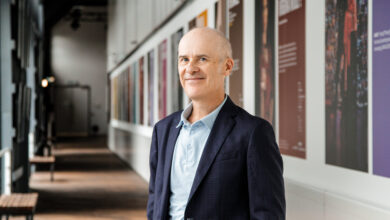Experts warn aged care of rising superbug rate: report

Experts have sounded the alarm on the growing crisis of antibiotic-resistant superbugs, increasingly posing a risk for aged care facilities.
The new report from the Australian Academy of Technological Sciences and Engineering (ATSE) and CSIRO warned Australia of a looming 'silent pandemic' of superbugs.
ATSE and CSIRO have urged high-risk settings, including aged care homes, to take immediate action to reduce the overuse of antibiotics and design a model to prevent antimicrobial resistance (AMR).
AMR occurs when bacteria and other microbes become resistant to the drugs designed to kill them, such as antibiotics, usually from misuse or overuse.
As we age, our risk of getting an infection increases due to a lowered immune system.
Residential aged care communities are more prone to frequent and deadly AMR outbreaks than other settings due to a close living environment and an older, frailer population.
Moreover, aged care facilities tend to have high levels of inappropriate antimicrobial prescribing and use.
Roughly one in ten aged care residents have been prescribed at least one antimicrobial, of which more than half showed no signs or symptoms of an infection.
Close to one-third of all prescriptions in aged care was for topical antimicrobials, used to treat fungal, viral and bacterial infections on the skin.
Branwen Morgan, lead of CSIRO's Minimising Antimicrobial Resistance Mission, said AMR could undermine modern medicine since these bacteria learn to adapt over time.
As soon as the first family of antibiotics was developed in the 1920s, its effectiveness began to decline.
Within six years, penicillin was no longer effective against a quarter of staphylococcal infections in hospitals.
"Resulting infections caused by these resistant microbes are hard – or impossible – to treat with available therapies," Morgan said.
"Without action to stop the prevalence of antimicrobial resistance (AMR), there is a risk of losing these life-saving interventions and returning to a pre-antimicrobial era.
"This is catastrophic for human health outcomes, which can rapidly and severely decline without the availability of effective treatments for infections."
CSIRO's report estimated that more than 10 million people could be killed by AMR each year, costing the world economy close to $150 trillion.
By 2050, simple infections could be deadly, and some surgeries are too dangerous to perform unless urgent action is taken.
The safety and quality commission reported that hospitals continue to overprescribe antibiotics, where in 2017, nearly one out of four antibiotic prescriptions were rated inappropriate.
Another report expected AMR infections to lead to the death of 1.3 million people worldwide in 2019 - a number greater than the death rate of HIV/AIDS and malaria combined.
Australian hospitals have one of the highest numbers of outbreaks of antibiotic-resistant E. faecium, where resistance rates have been above 40 per cent since 2016.
Of the nation's five most common AMR bacteria found in hospitals (Enterococcus spp., E. coli, K. pneumoniae, P.aeruginosa and S. aureus), P. aeruginosa was found to result in the highest death and hospitalisations rate.
Overall, AMR bacteria contributed to the highest hospital costs in bed days (nearly 13,000), costing them over $24,000 yearly compared to other infections.
The World Health Organisation has listed AMR among the top 10 global threats to health.
In 2019, 1.27 million deaths were directly attributed to drug-resistant infections globally.
Morgan said there was a 'social imperative to act now.'
"From our perspective, we feel there must be more of a preventive approach to tackle this issue before it manifests in total treatment failure," she said.
The report, released on Tuesday, calls for greater national coordination and a focus on streamlining commercialisation processes for new AMR solutions and technologies.
"Australia has the potential to be a strong global contributor in the development of technologies to combat AMR and should aspire to be a world leader in its management," it said.
"Australia has a wealth of creative and practical solutions for detection and prevention of AMR emerging in our own backyard."
Surface sprays that change colour when pathogens are present, and toilets that detect and disarm harmful microbes before they reach our waterways are two examples of the innovation that could be used in the superbug fight.
ATSE fellow and chair and MTPConnect non-executive director Sue MacLeman said it was time to move beyond alarm and for sectors to work together.
"These technologies would help Australia and the rest of the world maintain and extend the effectiveness of antibiotics or antimicrobials for longer," she said.
Email: [email protected]





